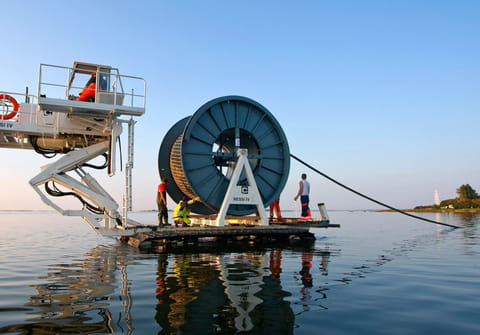How does the Internet work undersea: cables, map

Were you under the impression that the Internet only works thanks to satellites? Well, that is not exactly right. A vast undersea cable network also powers the global internet. We are familiar with the digital world nowadays. However, there are still some questions that arise. For example, how are internet cables installed underwater? Is it the only way to connect continents? Are cables cheaper than satellites? What happens if a shark bites into the cable - will we no longer have Netflix?
Is the Internet still cable-based?
Even if you think that the Internet has long since become wireless and satellite-based, this is not quite the case. Over 380 underwater cables are in operation worldwide, taking over 1.2 million kilometers (745,645 miles). Most of them are provided by web giant corporations such as Google, Facebook, Amazon, etc. Cables connect continents together and work like a vast computer motherboard. Natural catastrophes, such as hurricanes and earthquakes, could also break cables, and the continents would be separated for some time. This was the case in 2012 with Hurricane Sandy or the earthquake in Taiwan in 2006.
How do cables get installed underwater?
Cables are laid with specific boats called cable layers, which lay them on flat surfaces deep in the ocean to reduce the chance of them being damaged. They avoid coral reefs, sunken ships, boat anchors, and big fish. The deeper the cable is laid – the thinner it is because there is not so much happening 7000 miles below the sea. On the other hand, the diameter of a shallow water cable is similar in size to a gallon water bottle, making it solid and resistant. Generally, cables are wrapped in copper and urethane, but those in more dangerous zones are covered in extra plastic, kevlar armor plating, and stainless steel to ensure they do not break. The average lifecycle of an internet undersea cable is 25 years.

Do sharks eat our internet?
It might sound funny, but it is true: sharks like to eat our internet. There is no exact explanation why it is happening, but they really like to chew the submarine cables and it can sometimes cut off the whole continent from particular internet services such as Netflix or Amazon. Big companies like Google now wrap their fibers in special, very resistant material, kevlar, to ensure that it will not be damaged by sharks.
What were the first undersea cables?
The technique of underwater communication cables is not new. It started in 1858, over 160 years ago, when European and North American continents were connected by telegraph thanks to the 2,500-mile long and 0.6-inch wide cable in the middle of the Atlantic Ocean.

Are undersea cables more advantageous than satellites?
Even though it seems that the future is all about space, satellites, and interplanetary travel, we’re not quite there yet. Underwater cables play a huge part in global internet connection. The only continent that has not been linked physically to the global Internet is Antarctica. It relies on satellites and is neither the fastest nor the strongest connection. Internet connection only with satellites can cause bit loss and latency, whereas underwater optic fibers can transfer information at 99.7% of the speed of light.
How are broken undersea internet cables repaired?
Repairing an underwater solid cable doesn’t seem like an easy thing to do, especially considering their quantity beneath the ocean. However, during all these years, some techniques have worked better than others. When a submarine wire is broken, special repair ships come across it. For shallow cables, some robots go down to grab them and fix them from above the water. When the cable is located deep in the water (6500 feet or more), ships lower specially designed grapnels to get the cables to the surface and fix them. Sometimes, they cut the cable in two to make it easier to get out of the water.

